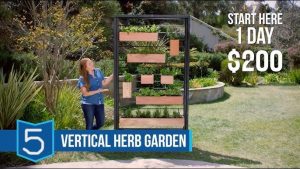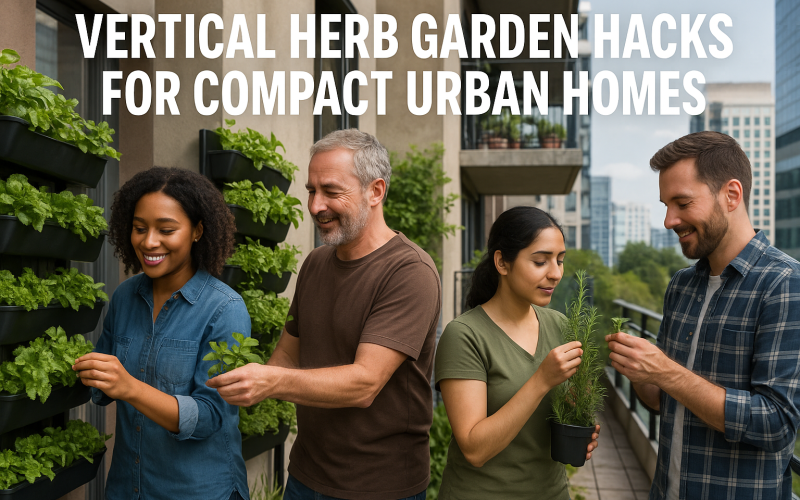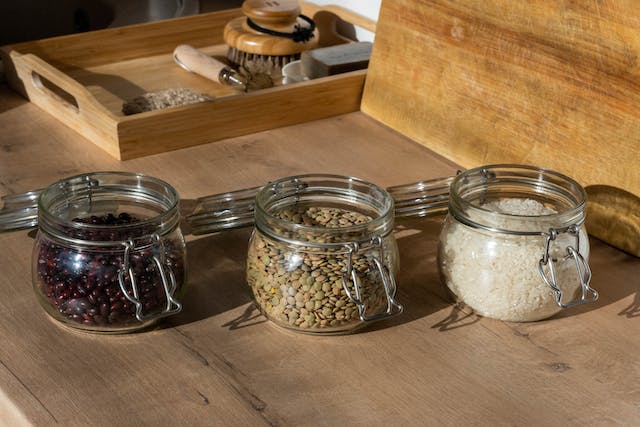Introduction
Living in a compact urban home doesn’t mean you can’t enjoy the beauty and freshness of a herb garden. Urban spaces are often limited when it comes to outdoor areas, but with a vertical herb garden, you can transform even the smallest space into a green haven. Growing fresh herbs in your apartment or small house not only adds beauty but also gives you easy access to healthy, home-grown ingredients for your cooking. In this article, we’ll explore some of the best high quality vertical herb garden hacks that will help you make the most of your compact living space. From DIY ideas to creative setups, we’ve got you covered!
What is a Vertical Herb Garden?

A vertical herb garden is a gardening method where plants are grown upwards, rather than horizontally. This makes it ideal for small spaces, such as apartments or homes with limited yard space. The goal of a vertical garden is to maximize the use of space by taking advantage of vertical surfaces like walls, fences, and even shelves. Herbs are particularly well-suited for vertical gardening because they are compact and easy to maintain, making them perfect for small spaces.
Vertical gardens can be set up in various ways, including using hanging pots, stacked planters, or custom shelving units. Whether you’re a seasoned gardener or a beginner, these garden hacks will help you grow your favorite herbs like basil, mint, cilantro, and rosemary, right at home garden!
Vertical Herb Garden Hacks for Small Spaces

1. Hanging Herb Planters
One of the simplest and most effective ways to create a vertical herb garden in small spaces is by using hanging planters. These planters can be placed on vertical walls, railings, or even hung from the ceiling. You can purchase ready-made hanging planters or make your own using materials like mason jars, small pots, or even recycled containers.
Hack Tip: Use self-watering planters for a low-maintenance garden. These planters have a built-in reservoir that helps maintain moisture levels, so you don’t have to water your plants constantly.
How to Set It Up:
- Install hooks or use a rod to hang your planters.
- Choose lightweight containers that can easily hang on hooks or bars.
- Ensure your planters have drainage holes to avoid overwatering.
Benefits: Hanging herb planters help save counter space and are perfect for sunny spots near windows or balconies.
2. Stacked Herb Planters
If you’re looking for an organized and efficient way to grow herbs, stacked planters are a great option. These planters allow you to grow multiple herbs in a small area by stacking pots on top of each other, creating a vertical garden that doesn’t take up much space. You can stack planters vertically using a tiered plant stand or DIY a stacked system with pots and a support frame.
Hack Tip: Use stacked planters with trays to catch any excess water and prevent drips. This keeps your home clean and your herbs happy.
How to Set It Up:
- Stack your planters grown vertically and ensure the pots are securely placed on top of each other.
- Position your stacked planters in a sunny spot for optimal herb growth.
- Consider using lightweight pots and choosing herbs that don’t require too much space, such as parsley, basil, or thyme.
Benefits: Stacked planters save space and allow you to grow several different herbs in a small footprint.
3. Wall-Mounted Herb Garden
For those who prefer a more permanent solution, a wall-mounted herb garden is a great option. You can create a vertical garden by mounting a series of small plant boxes, pots, or shelves directly to your wall. This approach utilizes unused wall space, turning it into a productive herb garden.
Hack Tip: If you want a more rustic look, use wooden crates or pallets to create a stylish wall-mounted garden. You can even paint the crates in colors that match your home’s decor.
How to Set It Up:
- Install small wooden shelves or planter boxes along the wall.
- Ensure the wall is strong enough to hold the weight of the wall planters.
- Choose herbs that require minimal space and sunlight, such as mint, chives, or oregano.
Benefits: A wall-mounted garden is highly customizable, and it also doubles as an attractive feature that adds character to your space.
4. Vertical Garden Tower
For a modern twist on vertical gardening, consider using a vertical garden tower. These towers are compact, often cone-shaped structures with several tiers for planting. They are easy to assemble and can be placed in small spaces like corners or near windows.
Hack Tip: Vertical garden towers are often self-watering, which makes them ideal for busy urban dwellers who don’t have time to water their plants daily.
How to Set It Up:
- Purchase a pre-made vertical garden tower or build your own using plastic or terracotta pots.
- Place the tower in a sunny area, making sure it’s positioned for good air circulation.
- Add soil and plant your herbs in the tower’s individual pockets or sections.
Benefits: Vertical garden towers are great for small apartments or homes with limited outdoor space. They offer an easy way to grow multiple herbs without occupying too much space.
5. Repurposed Household Items for Herb Growing
Repurposing old household items is an eco-friendly and budget-friendly way to create a vertical herb garden. Old shoes, wooden pallets, crates, and even wine bottles can be transformed into planters for your herbs. Not only does this give new life to old objects, but it also adds a creative touch to your garden.
Hack Tip: Make sure the repurposed items you use have drainage holes to prevent water buildup.
How to Set It Up:
- Choose items that have enough space for your herbs to grow (old shoes can be great for small plants).
- Add some soil, plant your herbs, and hang or place them in a sunny spot.
Benefits: Using repurposed materials makes gardening fun and allows you to express your creativity while saving money.
Future of Vertical Herb Gardens in Urban Homes

Looking ahead, vertical herb garden hacks will become even simpler and smarter. We can expect modular planter panels with built-in water reservoirs that feed plants evenly. Smart sensors may monitor moisture and light, then send alerts when a plant needs care. App-based guides could suggest the best herb mix based on your apartment’s light pattern and your cooking habits. New materials—like recycled plastics and hemp-based fibers—will make planters lighter and eco-friendlier. As these tools arrive, anyone in a compact urban home will find it easier than ever to grow fresh herbs on their living walls.
Comparative Table: Vertical Herb Garden Hacks for Small Spaces
| Garden Hack | Description | Benefits | Best For |
|---|---|---|---|
| Hanging Herb Planters | Using hanging pots or containers mounted on walls or ceilings | Saves space, adds greenery, and can be placed near windows | Small spaces, sunny spots, apartment living |
| Stacked Herb Planters | Stacking pots or containers on top of each other | Utilizes vertical space, organized look, allows multiple herbs | Small balconies, corner spaces |
| Wall-Mounted Herb Garden | Attaching plant boxes or shelves to walls | Maximizes vertical space, decorative, easy access to herbs | Apartments, indoor spaces with bare walls |
| Vertical Garden Tower | A tower-shaped structure with multiple planting levels | Easy to assemble, compact, self-watering options available | Patios, balconies, small outdoor areas |
| Repurposed Household Items | Using old containers like shoes, bottles, or pallets for planting | Eco-friendly, cost-effective, adds a personal touch | Budget-friendly gardening, creative spaces |
Conclusion
A vertical herb garden is the perfect solution for those living in compact urban homes. With a little creativity and a few clever hacks, you can grow your own fresh herbs right at home, even if you don’t have much space. From hanging planters to stacked planters and wall-mounted gardens, there are plenty of ways to create a green space that fits your lifestyle. So why not start your own vertical herb garden today and enjoy the benefits of fresh, home-grown herbs in your cooking?









